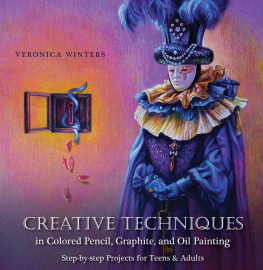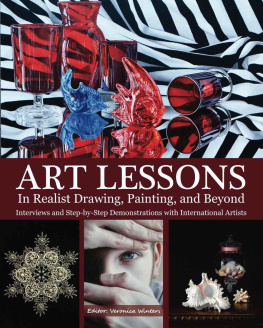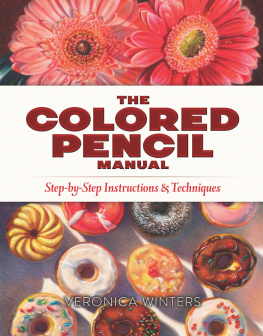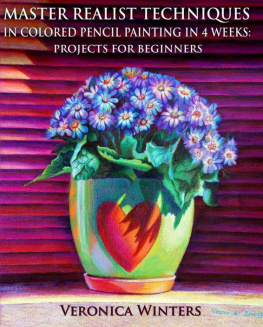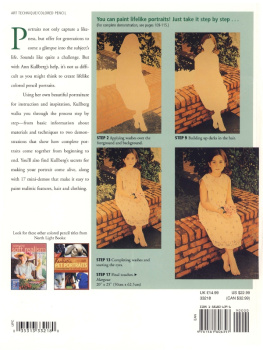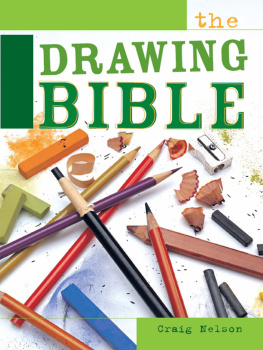About theArtist
Russian-Americanfine artist Veronica Winters holds an M.F.A. in painting from PennsylvaniaState University and a B.F.A. degree in studio art from Oklahoma State University.She studied classical painting at the Art Students League of New York and theGrand Central Academy of Art in New York. Veronicas art is found in numerousprivate collections and her work has been featured in Leisure Painter, AmericanArt Collector, Artists & Illustrators, Colored Pencil Magazine, 2004 &2013 Women Artists Datebook, and other image-licensed books and magazines.
Tosee Veronicas paintings, drawings, books, and projects, visitveronicasart.com.
SpecialThanks:
Ithank Stelli Munnis and Max Fomitchev for technical support with the book.
Imgrateful to Ingrid Lyon, editor of Leisure Painter, who let me use a few of mydemonstrations previously printed in the magazine.
Myheart goes out to all my supporters and friends. I couldnt have been heretoday without you!


Facing thirty six, self-portrait,colored pencil, x 15 in.
Introduction
Livingas an artist today is so much different from than it was just a couple ofcenturies back. Contemporary artists have so much freedom in choosing whatsubjects to paint or when and where to paint them. The Church is not the maincustomer or commissioner anymore, and artists can explore infinitepossibilities in their preferred art form. Women are free to pursue aneducation in art and are able to achieve a success in the field that was nearlyimpossible in the past. At the same time creative personalities face a numberof other challenges that might not have been so prevalent earlier.
Todayartists receive various education skill-wise and oftenlack the consistency, time and proven methods to develop technique. Until late19-th century artists went through grueling training methods, studying for manyyears in school, copying plaster casts, drawing and painting from life for manyhours each day and working as apprentices to master-artists of the day toeventually become professional, independent artists. Methods in learning thecraft of painting had been worked out for centuries in art schools whereartists faced thorough training in classical realism. When these rigideducational rules were finally broken, creativity was spurred but the learningprocess became complicated.
Today,many artists consider themselves accomplished without the same solideducational background their predecessors had. Sometimes it is to studentsadvantage, however, to study various methods of painting and drawing fromdifferent sources and on new terms. Having a variety ofapproaches and platforms to learning opens up new horizons for everyone. The Internet, YouTube, art magazines and books often feed our curiosity. Inaddition, education is open for all and we are not limited with our choices ofart institutions or practicing artists. State schools, workshops and adultclasses are popular among thousands of people wishing to learn the technique.Artist-run, contemporary classical schools have started popping up around thecountry nourishing students demand for consistent, classical approach topainting and drawing. The Grand Central Academy of New York, The Ryder Studioin Santa Fe and Studio Incamminati in Philadelphiaare established, successful examples of such educational venues.
Talentmeans a lot; talent is necessary to create great art. Yet, it doesnt count formuch standing alone without proper nourishment, just as a seed cannot growwithout watering. A solid education is necessary. People who think they have notalent and still want to paint can develop solid skills with patience andperseverance.
Manyof us who have the talent but only few succeed as artists. While the definitionof success is different to every person, we usually associate financial rewardwith success. Yet, in the case of a successful artist, its a combination ofsuperb professionalism, recognition, and financial independence. Smartmarketing and promotion strategies often become the pillars for success forcreative people running prosperous businesses. Artists work for years toachieve this level of accomplishment that requires a lot more than just fewleisurely, painting sessions outdoors.
Drawingand painting can fulfill two roles simultaneously; it is done in pursuit ofcopying reality or in pursuit of enjoyment while expressing ones inner self.So often we as artists struggle to figure out what to paint. In my opinion,its both roads we have to travel to figure out who we are and how we relate toour purpose, profession and the world.
Thisbook is designed to illustrate the very basic concepts pertinent to my artisticprocess. Its an inspirational guide that shows my method of drawing andpainting. Rather than trying to copy it letter by letter, take this knowledgeand apply it to your art. Every artist is different and has his own unique wayof painting. I truly hope this book helps you find what you seek technicallyand creatively. While drawing apples, spoons, cups, houses and trees isnecessary during the active learning stage, the true artist searches for hispassion and style. It takes years of practice. Art is a non-verbal language.What would you like to say with your art?
Practicingdrawing using plaster casts, models, objects and the outdoors is essential tounderstanding how light affects the form. Our powers of observation, ability togather, interpret, and extrapolate information, and as well to collect andexpand ideas grows daily if we just keep painting from life diligently. Bycompleting small studies, artists focus on understanding light and shade,compositional balance, color, and the development of details found within big,simple shapes.
Whilestriving for excellence, dont think of your drawing as an end product or amasterpiece. Rather treat every new painting as an opportunity to learnsomething novel even if its not perfect. Try various mediums and theircombinations to explore creativity and possibilities in art. Eventually eachartist finds his favorite not only through trial and error but also throughunique connection forming between persons character and the medium.

